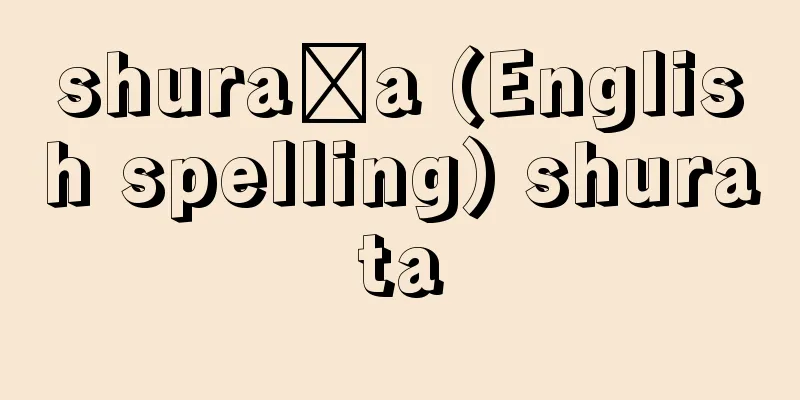Palindrome - kaibun

|
A word or phrase that has the same characters and the same sentence whether read from top to bottom or bottom to top. It is also called a "kaimon" and in Europe it is called a palindrome. It is a very special type of linguistic expression, such as "The bamboo grove burned" or "Madam, I'm Adam," and has a strong element of language play. In Chinese poetry, there are examples where the whole poem is inverted, such as "Salt flies and butterflies dance, flowers fall and powdery white, powdery white floating flowers, dancing butterflies and flying salt" by Emperor Jianwen of the Liang dynasty in China, or individual lines are inverted, such as "Falling flowers, the courtyard is thin in spring, thin clothes, the courtyard is quiet and the flowers fall, the days are late, resentment is resentment, resentment is resentment, the days are late..." from Su Dongpo of the Tang dynasty. In addition, "Honsho Monzui" includes examples such as "Many boiled tea names, how to drink them, within a harmonious body, scattering agony and curing illness" (Miyako no Yoshika), which rhymes again when read backwards and becomes a completely different poem. In waka poetry, the oldest example is "Mura-kusa ni kusa no na wa moso sona haraba nazoshi mo hana no saku ni sakura mu" found in "Ougisho" (written by Fujiwara no Kiyosuke, compiled around 1140), and the most well-known example is "Nagakiyo no towo no neburi no minamezame nami nori boat no oto no yoiki kana" ("A long time for sleeping, everyone wakes up, the waves nori boat no oto no yoiki kana"), which was added to a picture of a treasure ship, an auspicious object of fate, during the Edo period. In waka poetry, the number of characters in the first and second lines is different, which makes it technically difficult and gives it a strong playful character, so there are many examples in kyoka poetry, with 15 in "Gogin waga shu" (written by Ishida Mitoku, compiled around 1650), and there are also palindrome poetry collections such as "Momoku Kuruma" (written by Sanyutei, published in 1808). Perhaps because linked verse and haikai have a regular number of characters and are relatively easy to compose, they were quickly picked up in books on how to write them, such as "Kefukigusa" (by Matsue Shigeyori, published in 1645), and there were many examples. There were also many collections of haiku poems consisting entirely of palindromes, such as "Kaibun Haikai Hyakuin" (by Ishida Mitoku, completed in 1644) and "Mizuguruma Shu" (by Nakajima Zuiryu, published in 1661). [Toshihiko Uda] Source: Shogakukan Encyclopedia Nipponica About Encyclopedia Nipponica Information | Legend |
|
上から読んでも下から読んでも同字・同文になる詞句。「かいもん」ともいい、ヨーロッパではパリンドロームpalindromeという。「竹やぶ焼けた」、“Madam, I'm Adam”のように、言語表現のきわめて特殊なもので、言語遊戯的な要素が強い。 漢詩では、中国梁(りょう)の簡文帝の「塩飛乱蝶舞 花落飄粉奩 奩粉飄落花 舞蝶乱飛塩」のように全体を倒置するものや、唐の蘇東坡(そとうば)の「落花閑院春衫薄 薄衫春院閑花落 遅日恨依依 依依恨日遅……」のように一句ごとに倒置するもののほか、『本朝文粋(もんずい)』には「多煮茶名 飲来如何 和調体内 散悶除痾」(都良香(みやこのよしか))のように、逆から読むと、また韻を踏み、まったく別の一詩となる例を載せる。 和歌では、『奥義抄(おうぎしょう)』(藤原清輔(きよすけ)著、1140ころ成立)などに載る「むら草に草の名はもしそなはらばなぞしも花の咲くに咲くらむ」が古く、江戸時代に縁起物の宝船の絵に添えられた「長きよのとをのねぶりの皆めざめ波乗り舟の音のよきかな」は、もっともよく知られた例といってよいだろう。和歌では、上句と下句で文字数が異なるため技巧的に無理があり、遊戯的な特徴が強くなるので、狂歌に作例が多く、『吾吟我(ごぎんわが)集』(石田未得(みとく)著、1650ころ成立)に15首載るほか、『百(もも)よくるま』(三友亭著、1808刊)などの回文歌集もある。 連歌や俳諧(はいかい)では、字数が整っていて比較的容易につくれるためか、早く『毛吹草(けふきぐさ)』(松江重頼(しげより)著、1645刊)などの作法書が取り上げて作例も多く、『廻文(かいぶん)俳諧百韻』(石田未得著、1644成立)、『水車(みずぐるま)集』(中島随流著、1661刊)ほか回文だけの句集も数多くできている。 [宇田敏彦] 出典 小学館 日本大百科全書(ニッポニカ)日本大百科全書(ニッポニカ)について 情報 | 凡例 |
<<: Palindrome poem - Kaibunshi (English spelling) huí wén shī
>>: Kaibutsu Shiso - Kaibutsu Shiso
Recommend
arecolin
...If used regularly, it will turn the inside of ...
Modulor (English spelling)
A system of scale invented and proposed by Le Corb...
Inugashi - Inugashi
It is an evergreen small tree of the Lauraceae fa...
American Wrestling Association
…Wrestling's popularity in the United States ...
Paulet, PA
…These two men are especially highly regarded as ...
Cave kiln
A kiln constructed by digging a hole into the grou...
The eaves of the palace - Konro no Miura
Since the Heian period, divination has been practi...
Keimeikai - Keimeikai
The first teachers' union was formed in 1919 ...
ASP Report - ASP Report
... The Three Mile Island accident was a major tu...
Medieval drama
A general term for the various theatrical performa...
Extremely inferior midline - Kyokukaseichu
…It is also called the polar midline, or simply t...
Yorktown (English spelling)
A town on the coast of southeastern Virginia in th...
gay-coloured beetle
...About 3,000 species are known from around the ...
Chinchilla laniger
...Its appearance resembles both a rabbit and a s...
"Omori Kaikyo Antiques" - Omori Kaikyo Antiques
…It was the first archaeological site in Japan to...









